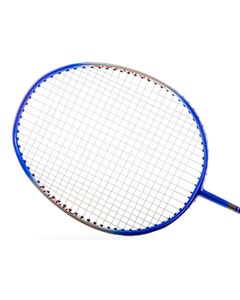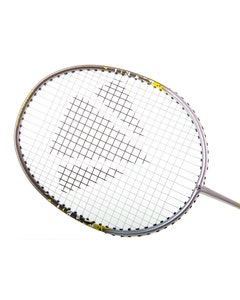Shop for the best badminton racquets at Gopher Sport to outfit teams and PE classes!
The different parts of the racquet give it different performance and durability characteristics. Here are some tips to help you understand the different features of racquets and why they matter.
Racquet frame and shaft materials
The strings are strung within the head of the racquet, which is then attached to the frame of neck, which terminates at the handle. Choose from 5 materials:
- Steel: The most durable but slightly heavier. Great for beginners and younger students who may periodically mishandle the racquet.
- Aluminum: Lighter than steel so easier to control but a little softer and can get damaged if a player hits a wall or the floor. Great for all play.
- Graphite: Very light and extremely stiff. Provides fantastic control. For advanced play (yet still very affordable).
- Carbon Fiber: Stiffest and most lightweight badminton racquets. No better material for the player who wants top performance and is willing to pay for it.
- High Performance Plastic: One-piece molded racquets are lightweight and durable. Not indestructible but with no strings to break and the ability to return to shape, it's perfect for schools and unsupervised players.
Frame construction
- Single Shaft: The traditional design, lightweight and suitable for all play.
- Twin Shaft: Stronger than single shaft, ideal for rough use
Head shape and size
- Oval: The traditional shape. For all levels of play.
- Isometric: A modified oval shape that provides a larger sweet spot.
Strings
- Monofilament Nylon: A single strand of nylon, relatively responsive and strong. For all play.
- Multifilament (Braided) Nylon: Multiple strands of thinner nylon braided together for greater strength. For advanced play.
- Coated-Steel: Braided steel wire with a thin coating to prevent rust and fraying; the strongest but least responsive. Ideal for rough use.












